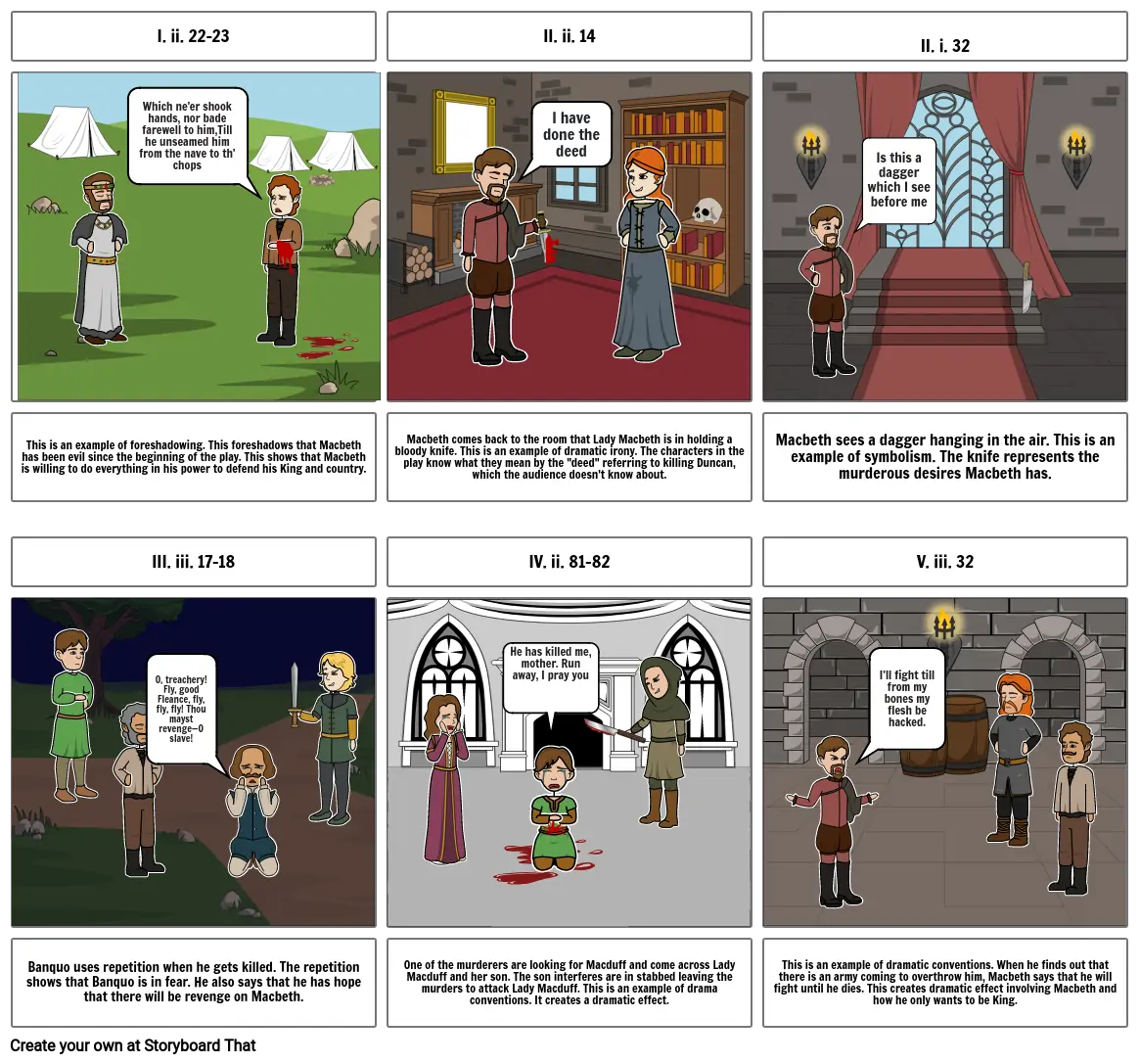Macbeth Violence

טקסט Storyboard
- I. ii. 22-23
- Which ne’er shook hands, nor bade farewell to him,Till he unseamed him from the nave to th’ chops
- II. ii. 14
- I have done the deed
- II. i. 32
- Is this a dagger which I see before me
- This is an example of foreshadowing. This foreshadows that Macbeth has been evil since the beginning of the play. This shows that Macbeth is willing to do everything in his power to defend his King and country.
- III. iii. 17-18
- O, treachery! Fly, good Fleance, fly, fly, fly! Thou mayst revenge—O slave!
- Macbeth comes back to the room that Lady Macbeth is in holding a bloody knife. This is an example of dramatic irony. The characters in the play know what they mean by the "deed" referring to killing Duncan, which the audience doesn't know about.
- IV. ii. 81-82
- He has killed me, mother. Run away, I pray you
- Macbeth sees a dagger hanging in the air. This is an example of symbolism. The knife represents the murderous desires Macbeth has.
- V. iii. 32
- I’ll fight till from my bones my flesh be hacked.
- Banquo uses repetition when he gets killed. The repetition shows that Banquo is in fear. He also says that he has hope that there will be revenge on Macbeth.
- One of the murderers are looking for Macduff and come across Lady Macduff and her son. The son interferes are in stabbed leaving the murders to attack Lady Macduff. This is an example of drama conventions. It creates a dramatic effect.
- This is an example of dramatic conventions. When he finds out that there is an army coming to overthrow him, Macbeth says that he will fight until he dies. This creates dramatic effect involving Macbeth and how he only wants to be King.
נוצרו מעל 30 מיליון לוחות סיפור

